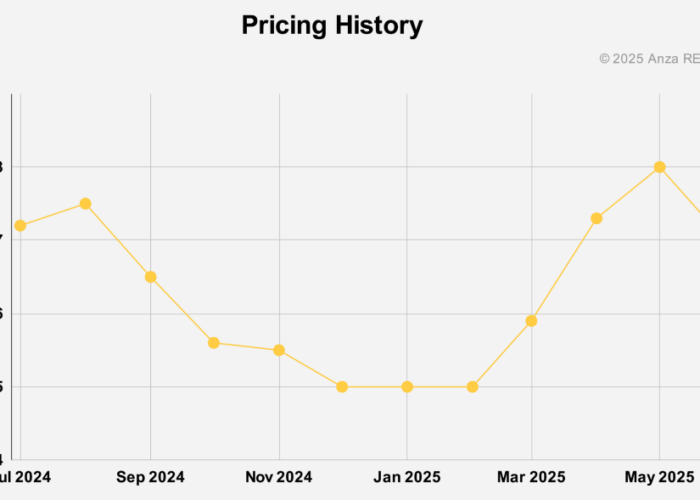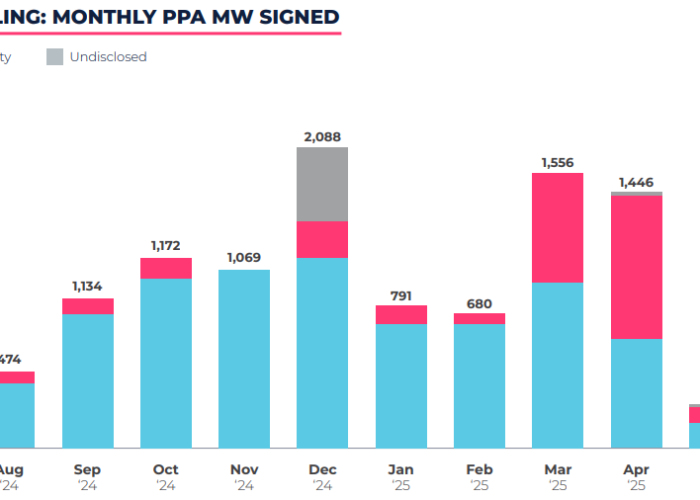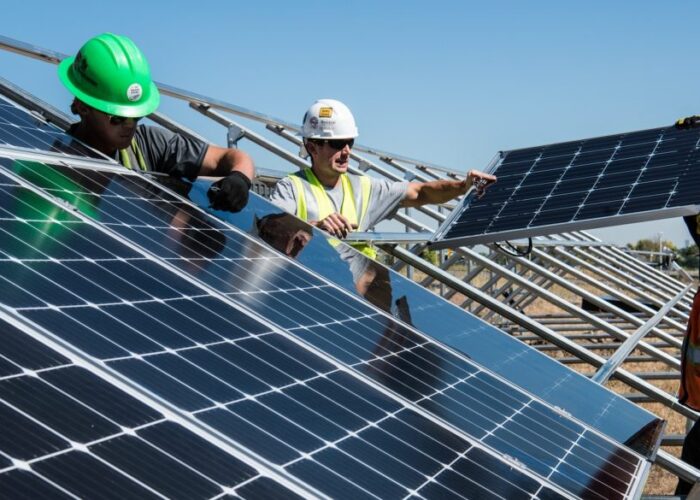Increasing panel efficiencies and power ratings represents a key deliverable from the PV industry today. These requirements are not simply long-term objectives for the industry as a whole: they are essential at the company level to differentiate leading suppliers within an overcrowded and highly competitive manufacturing environment.
Efficiency enhancements typically require changes in manufacturing process flow and materials (raw and consumable) used in production. Ideally, the technologies that drive these changes will be those featured within a technology roadmap.
PV manufacturers that succeed in implementing these technologies should be rewarded with dominant market-share. Equipment and materials suppliers that offer key products for the new process flows should become preferred suppliers during subsequent expansion phases.
Unlock unlimited access for 12 whole months of distinctive global analysis
Photovoltaics International is now included.
- Regular insight and analysis of the industry’s biggest developments
- In-depth interviews with the industry’s leading figures
- Unlimited digital access to the PV Tech Power journal catalogue
- Unlimited digital access to the Photovoltaics International journal catalogue
- Access to more than 1,000 technical papers
- Discounts on Solar Media’s portfolio of events, in-person and virtual
It is therefore not surprising that there are many R&D labs, equipment/materials suppliers, PV manufacturers and regional associations that are aggressively seeking to influence the content and timing of such a roadmap. The conclusions that are derived from these roadmaps are frequently used by equipment and material suppliers as the basis of their corporate strategies to align with expected industry demand.
PV roadmap uncertainty
The above sequence of events is only effective if the roadmaps are closely tied to what is being implemented by PV manufacturers that have dominant market-share; something that has not always been the case.
Indeed, equipment and materials suppliers through the value-chain and the supply-chain have often learned this the hard way, having aligned their in-house strategies with roadmap outcomes that were different from the leading players in the PV industry.
Consequently, scepticism continues to be applied to some of the PV technology roadmaps under consideration.
However, the underlying premise of establishing a cohesive PV technology roadmap remains sound. What needs to change is the methodology and assumptions being used as the inputs to the roadmaps being proposed.
The NPD Solarbuzz PV technology roadmap
The NPD Solarbuzz methodology starts by mapping out detailed process flows for all PV manufacturers and then tracks the impact of products produced through each process flow type as they move downstream to satisfy end-market demand. This commercially-focused approach is supplemented by an analysis of manufacturers’ equipment spending and suppliers’ backlogs and recognized revenues at the tool level for each process flow.
A number of technology options arise through this method, characteristic of the highly fragmented PV technology landscape that has received strong capital equipment investment during the past 2-3 years. These investments – across a wide range of c-Si and thin-film alternatives – have often been supported by well-organized marketing campaigns that have presented strong argumentation in support of each option.
Despite the number of options being promoted, it is prudent to concentrate only on the existing and short-term plans of leading PV manufacturers. And with 9 out of the top-10 producers today coming from the c-Si segment, prioritizing tier 1 c-Si manufacturers becomes imperative.
Choosing which part of the c-Si value-chain to prioritize is also not without its challenges. Regardless of the commercial push on technology adoption that may come from low-ASP SoG polysilicon, new ingot growth methods such as cast-mono, or a greater adoption of diamond wire saws, the pull from c-Si cell manufacturing outweighs any upstream development.
Indeed, the various c-Si cell concepts used by tier 1 manufacturers place fundamental requirements on the quality of polysilicon, the substrate type (n-type or p-type, mono or multi), the wafer thickness, and the production tools employed. Each cell concept also has different processing costs (both fixed and variable) and average efficiency levels that can be realized. This combination of cost and efficiency then defines factory-gate $/W levels, with premium efficiency, bankability and supplier branding creating the final differentiated market offering.
Shortcomings of legacy c-Si segmentation
Historically, it was sufficient to segment c-Si technologies only by mono or multi (pulled, cast or ribbon grown), or by ‘standard’ or premium ‘high-efficiency’ (HE) categories. With the contributions from ribbon-growth and HE types being somewhat company-specific, the remainder of the industry was then lumped into a simple ‘mono-or-multi’ c-Si technology differentiation.
Today, however, a variety of roadmap options are being actively pursued by all other tier 1 c-Si cell manufacturers now. And this includes new concepts that cannot be adequately addressed simply by checking whether they utilize mono or multi wafer substrates.
Market leaders dictate roadmap technologies
Technologies that will ultimately dominate the PV industry will be those that the market leaders decide to implement in mass production. Moreover, these technologies may not even feature in PV roadmaps today.
Conversely, any technology not adopted by tier 1 participants is unlikely to gain anything but niche market traction (at least initially) regardless of how compelling the arguments are for lower cost or higher efficiency production.
There is no shortage of analogies from adjacent technology sectors to substantiate the above statements, and no reason why the PV industry should not evolve any differently.
Strategies of tier 1 c-Si cell makers
The strategies being implemented today by tier 1 c-Si producers can be broadly split into cost/yield optimization or advanced, high-efficiency (HE) cell concepts. Those manufacturers with a more cautious approach are favouring the cost/yield route. Others have been more aggressive in ramping capacity for advanced cell designs. However, all leading producers have announced JDAs, R&D activities, or pilot-line operations that now fall into the HE category.
When reviewing the different options being pursued for higher efficiencies, no less than 15 different cell types comprised the 2011 production output from tier 1 cell makers, as illustrated in Figure 1. Even the generic ‘label’ of Selective Emitter, being widely marketed as a badge of credibility for in-house plans, covers a diverse range of options at the front and back-end.
Therefore, it is perhaps too early to jump to any immediate conclusions for a technology roadmap that encompasses the majority of tier 1 c-Si cell production. During 2011, over 75% of c-Si cells supplied by tier 1 producers were based upon legacy process flows that have dominated PV manufacturing for the past decade. Rather, a more useful leading indicator will be derived from the progress of the various Gen 2 HE concepts (including all the Selective Emitters) over the next 12-18 months.
Where is the technology-buy cycle?
With new capacity investments broadly on hold until there is sufficient confidence of annual demand exceeding the 30-35 GW level, it is widely predicted that a technology-buy cycle will pre-empt any incremental capacity coming online from tier 1 manufacturers. Indeed, the nature of these technology-buys should offer some guidance as to which of the emerging HE cell concepts are the front-runners that will shape the PV technology roadmap of the future.
However, in this regard, there are no strong signals yet to guide equipment and materials suppliers. Technology-buys have yet to provide any meaningful upgrade or retrofit spending contribution. What technology-buys there have been over the past 12 months have been spread across a diverse range of technologies at the ingot and cell manufacturing stages.
Only when the true manufacturing costs of new concepts are fully established will the respective manufacturers be in a position to assess whether these technologies are sufficiently mature to warrant prime time deployment.
Until then, the overall efficiency distribution of c-Si cells produced by tier 1 manufacturers (see Figure 2) may offer the most useful indicator as to the rate of technology change across the PV industry. Coupled with manufacturing cost reductions, this once again highlights that the $/W ratio remains the only metric that may have a roadmap trajectory that few would disagree on.






